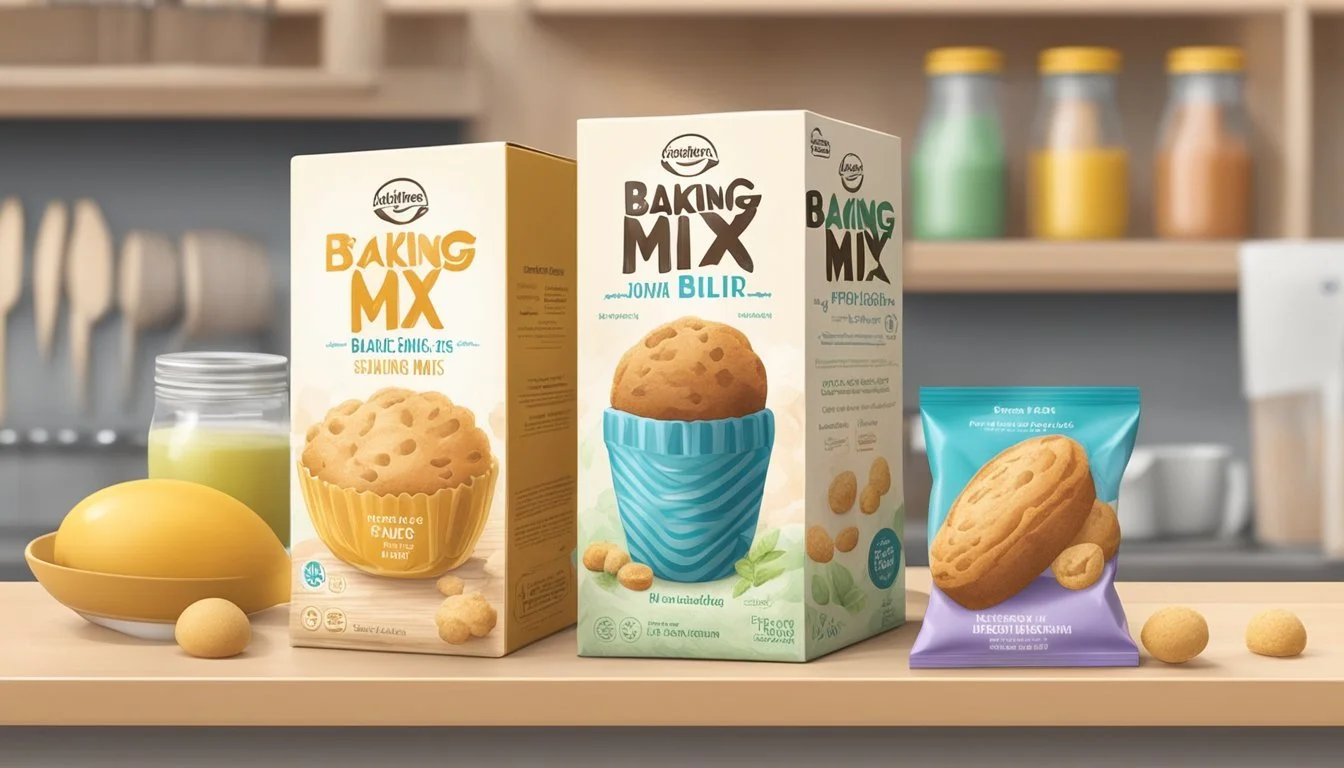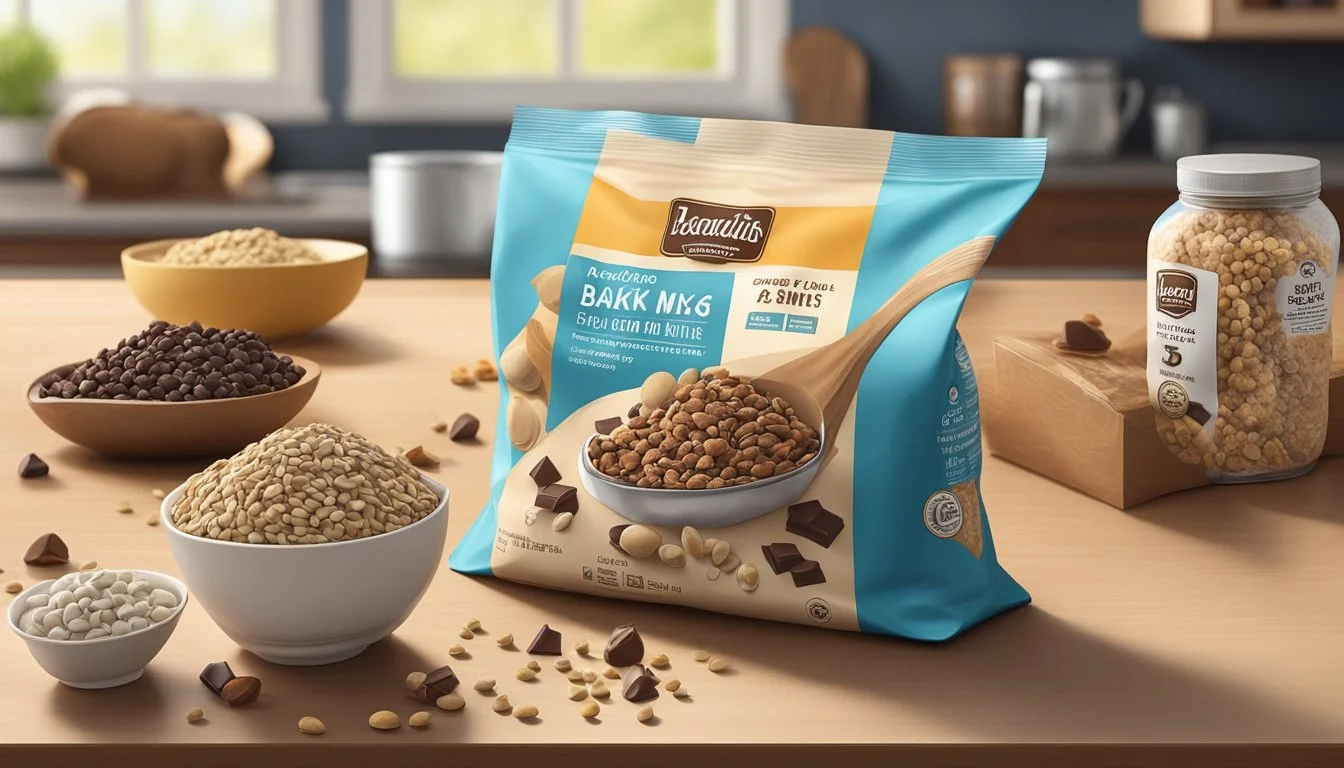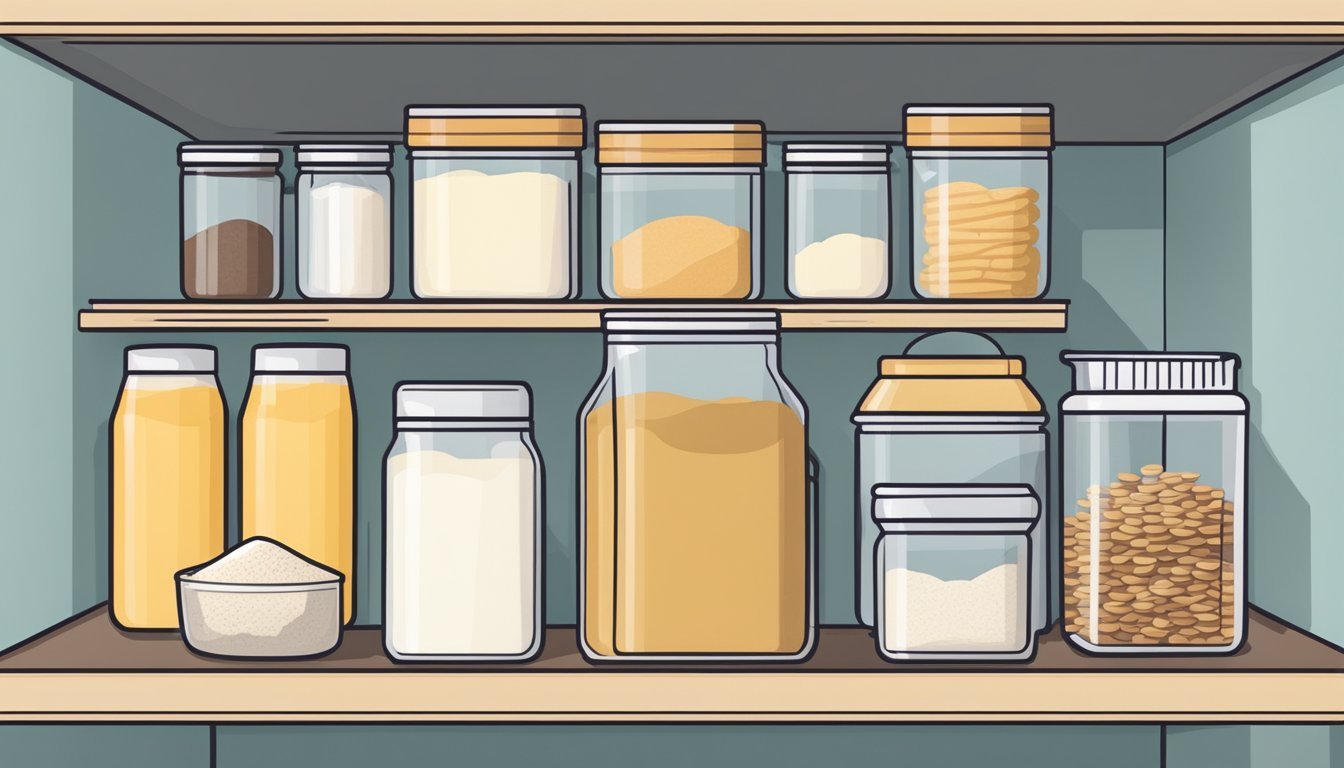How Long Does Baking Mix Last?
Shelf Life and Storage Tips
Baking mixes are a staple in pantries around the world, offering a convenient shortcut to creating various baked goods. The shelf life of these mixes is a significant consideration for both food safety and quality. An unopened commercial baking mix (how long does baking mix last?) can generally last for about 12 months when stored in a cool, dry place, ensuring its best quality. This duration can vary based on the ingredients and the presence of preservatives within the mix.
Once opened, the mix's longevity can decrease due to exposure to air and humidity, potentially leading to a loss of leavening power or the development of off-flavors. It’s commonly suggested that, for optimal results, these mixes be used relatively soon after opening, though some may remain safe to consume beyond this period. Factors such as packaging, storage conditions, and the type of mix also play a critical role in determining the actual shelf life of the product.
To extend the usability window, transferring the mix to an airtight container upon opening can be an effective strategy. Consumers are advised to pay attention to the 'best by' dates and look for changes in appearance, smell, or texture as indicators of the mix's condition, taking care to avoid using any product that shows signs of spoilage.
Understanding Baking Mix Basics
Baking mixes offer a convenient shortcut in the kitchen, providing a pre-measured blend of ingredients for a variety of baked goods. They are designed to ensure consistency and save time, but their shelf life and components vary.
Defining Baking Mix
A baking mix typically contains the essential dry components needed for a specific recipe. They are created to simplify the process of baking goods such as cakes (how long do cakes last?), cookies, and bread. Their convenience lies in their pre-measured ingredients, requiring only a few wet ingredients to complete the mixture.
Common Ingredients in Baking Mixes
The basic components of most baking mixes include:
Flour: The foundation that provides structure.
Sugar: Adds sweetness and tenderizes the bakery item.
Leavening agents: Such as baking soda or baking powder, included to help the product rise.
Salt: Enhances flavor and controls yeast development in bread mixes.
Other possible additions depending on the mix type are:
Cocoa powder: For chocolate-flavored treats.
Dried fruits or nuts: To add texture and flavor.
Sprinkles or chocolate chips (how long do chocolate chips last?): For decoration or added taste.
Role of Leavening Agents
Leavening agents in baking mixes serve a critical function: they produce the gas that causes the mixture to rise, leading to the soft and spongy texture desired in baked goods. Baking soda (sodium bicarbonate) reacts with acidic ingredients to create carbon dioxide, while baking powder contains both an acid and a base, allowing it to work without additional acidic components.
Shelf Life of Baking Mix
The shelf life of baking mix is a matter of keeping an eye on the expiry timeline, understanding the factors that affect its longevity, and being able to interpret expiration dates accurately.
Typical Expiry Timeline
Generally, an unopened package of biscuit mix retains its best quality for up to 1 year when stored in a cool, dry area. Cake mix (how long does cake mix last?), which is similar in composition, can often be safely consumed for months and even years past the printed expiration date if stored properly.
Biscuit Mix: Up to 1 year (best quality)
Cake Mix: Months to years (safe consumption, quality may vary)
Factors Affecting Shelf Life
Several elements can reduce or extend the shelf life of baking mixes:
Storage Conditions: A cool, dry place can significantly extend a mix's usability.
Packaging Integrity: Compromised packaging may allow moisture or pests, which can spoil the mix.
Ingredient Stability: Certain ingredients in the mix may degrade faster than others, affecting overall shelf life.
Decoding Expiration Dates
"Best by" and "Use by" dates provide a guideline on the peak quality of the baking mix but are not concrete indicators of safety.
Best by Date: Suggests when the product will be at its best flavor and texture.
Expiry Date: Can often be extended, especially if the mix is unopened and stored correctly.
Understanding these dates helps consumers gauge not just safety but quality of their baking mix over time.
Proper Storage Conditions
Maintaining the quality of baking mix over time largely depends on how it is stored. Proper storage conditions can significantly prolong the shelf life and freshness.
Ideal Storage Environments
Baking mix should be stored in a cool and dry place to prevent exposure to moisture which can lead to spoilage. A pantry or cupboard, away from any sources of heat or sunlight, serves as an ideal storage environment. Consistent temperature is key; fluctuations can adversely affect the mix.
Protective Packaging Solutions
Once opened, a baking mix should be kept in an airtight container to protect it from air and moisture. If the baking mix comes in a paper or cardboard package, transferring it to a resealable plastic bag or container with a tight-fitting lid can greatly reduce the risk of contamination and extend its freshness.
Extending Freshness With Refrigeration
For long-term storage, placing the baking mix in the refrigerator or freezer can extend its usability, especially in humid or very warm climates. When storing in the fridge or freezer, it is imperative to ensure the container is airtight to avoid the mix absorbing odors. Label the container with the current date for future reference on freshness.
Fridge: Store up to several months beyond the best-by date.
Freezer: Store up to twice as long as the pantry lifespan.
Remember to bring the mix to room temperature before use for best results.
Detecting Spoilage in Baking Mix
To ensure food safety and quality, detecting spoilage in baking mix is crucial. This section will outline specific indicators to help identify whether a baking mix has gone bad.
Visual and Olfactory Indicators
One can often determine the freshness of a baking mix through careful examination. Signs of spoilage include:
Mold: Any visible signs of mold, which could present as green, black, or white spots, signify spoilage.
Discoloration: Any abnormal changes in color are indications that the mix should not be used.
Off smell: An unpleasant or sour odor is a clear indication that the baking mix has spoiled.
Tactile Clues and Textural Changes
The feel of the mix can also provide information about its condition:
Clumping: While some clumping may occur naturally, excessive or hard clumps may suggest moisture intrusion, which can lead to spoilage.
Texture: If the mix feels off in any way or if its texture has changed from its original state, it is best to discard it.
Dangers of Using Spoiled Mixes
Using a spoiled baking mix poses risks:
Taste: A spoiled mix can result in a baked good with an unpleasant taste.
Health: Consuming products made from a spoiled mix can be dangerous and may lead to foodborne illnesses.
Being vigilant about these indicators protects consumers from the unpleasant effects of using spoiled baking mixes.
Using an Expired Baking Mix
Baking mixes generally come with a shelf life, which can, under certain conditions, be extended beyond their expiry dates. This section discusses the nuances of using an expired baking mix, focusing on safety considerations, potential effects on baking quality, and scenarios where using an expired mix might still be acceptable.
Assessing the Risks
When considering the use of an expired cake mix, one must appreciate the potential health risks involved. Safety is a primary concern as the ingredients within the mix may degrade. Ingredients like fats can become rancid, while the potency of leavening agents, such as baking powder or baking soda, could be reduced. Such degraded ingredients not only lead to poor taste and quality but, in rare cases, might pose health risks if there are signs of spoilage, such as unpleasant odors or visible mold.
Impact on Baking Outcomes
Leavening agents are crucial in giving cakes their light and airy structure. An expired baking mix may result in a flat cake due to the loss of leavening strength. Consumers should be prepared for variations in texture and volume, as an expired mix may not rise as expected. Nonetheless, for less intricate baking needs, such as crumble toppings or other recipes where rise is less critical, an expired mix may still serve its purpose without noticeably compromising the outcome.
When It's Safe to Use After Expiry
Expired baking mixes are often safe to eat if they are only a few months past the indicated expiry date and have been stored in a cool, dry place. The mix might still be usable, particularly in recipes where the leavening is not essential. However, one should always conduct a thorough inspection for any warning signs of spoilage and perform a smell check to ensure that the mix has not turned rancid. If there are any doubts about the quality or safety of the mix, it is best to err on the side of caution and discard the expired product.
Special Considerations for Mix Add-Ins
When adding extra ingredients to a baking mix, one should consider how these add-ins affect flavor, moisture, and consistency. It's important to balance these elements to maintain the quality of the final product, whether it's a chocolate cake or strawberry crepe.
Incorporating Flavors and Toppings
To introduce additional flavors to a basic mix, one can incorporate various ingredients such as chocolate chips for a richer taste or fruit pieces for a fresh twist. For instance, in a chocolate cake mix, adding a half cup of peanut butter (how long does peanut butter last?) can enrich the flavor profile. Toppings like nuts (how long do nuts last?) or streusel should be sprinkled on top right before baking to maintain their texture and distinct taste.
Chocolate Cake Mix Add-In Example:
Flavor: Add 1/2 cup of peanut butter for a nutty taste
Topping: Sprinkle 1/4 cup chopped nuts before baking for crunch
Adjusting Proportions for Consistency
Add-ins can alter the moisture and density of the mix. If one adds fruit purees to a mix, they may need to reduce other liquid components to maintain the proper consistency. Conversely, ingredients like additional flour or dry cocoa powder may require an increase in liquids or fats like shortening to keep the batter from becoming too thick.
Proportion Adjustments for Strawberry Crepe Mix:
Moisture: Reduce milk by 1/4 cup if adding 1/2 cup strawberry puree
Consistency: Add an extra tablespoon of shortening if using whole grain flour
Common Allergens and Substitutes
Attention to allergens in add-ins is crucial for those with dietary restrictions. Substitutions can be made to accommodate these needs without sacrificing flavor or texture. For example, almond flour can replace wheat flour for a gluten-free option, and sunflower seed butter can substitute for peanut butter in mixes intended for those with nut allergies.
Substitutions for Common Allergens:
Flour: Use almond flour instead of wheat flour for a gluten-free cake mix
Nut Butter: Opt for sunflower seed butter in lieu of peanut butter
When adjusting a mix with additional ingredients, one should always consider how these changes will impact the final baked good. Proportions, flavors, and potential allergens play a significant role in these adjustments, and careful consideration ensures a successful outcome.
Pantry Management to Prevent Spoilage
Proper pantry management is crucial for extending the shelf life of baking mixes and preventing spoilage. By maintaining optimal conditions and meticulous organization, one can ensure the quality and safety of these dry ingredients.
Maintaining Optimal Humidity and Temperature
To preserve the freshness of baking mixes, a pantry should have low humidity and be cool. The ideal temperature should stay below 75°F (24°C), as higher temperatures can cause the fats in the mix to spoil. A hygrometer can be used to monitor the pantry's humidity levels, which should be kept at relatively low levels to prevent the introduction of moisture, which leads to spoiling and clumping of dry mix ingredients.
Keeping Pests at Bay
Pantry pests can ruin baking mix by feasting on or nesting in the product. To safeguard against these invaders, store baking mixes in airtight containers to prevent exposure to air and pests. Regularly inspecting the pantry for signs of infestation, such as webs or larvae, is essential. If evidence of pests is detected, it's crucial to remove the affected products immediately to prevent the spread.
Organizing the Pantry for Baking Efficiency
Storage conditions directly affect the shelf life and usability of baking mixes. By organizing the pantry, one can reduce the time these mixes are exposed to adverse conditions. Place newer purchases behind older stock (FIFO - first in, first out system) to use them in the order they were purchased. Labeling shelves and storage areas can streamline the search for ingredients, minimizing the time during which the pantry is open and exposed to fluctuating temperatures and humidity.
Creative Uses for Near-Expired Mixes
Before a baking mix reaches its expiry date, one can explore a variety of inventive uses to make the most of the product. These ideas can transform an ordinary baking mix into delightful treats, ensure optimal use, and contribute positively to waste reduction.
Alternative Recipes and Ideas
When common baking mixes approach their "best by" date, they can still serve as a base for numerous alternative recipes. For instance, one can prepare cake mix cookies by adding a few simple ingredients such as eggs and oil to the mixture. They can also experiment with cake mix brownies for a quick and indulgent treat. Pancakes and waffles made from cake mix add a sweet twist to traditional breakfast items.
Recipes with Near-Expired Mixes:
Cake Mix Cookies: Add eggs, oil, and choose mix-ins like chocolate chips or nuts.
Brownies: Combine cake mix with melted butter and an egg for a dense, fudgy texture.
Sweets for Breakfast: Use the mix to make pancakes or waffles topped with fruit.
Freezing for Extended Usability
Freezing can extend the usability of near-expired baking mixes significantly. Prior to freezing, one should ensure that the mix is sealed in an airtight container. Labeling with the current date helps to keep track of when it was stored. Baked goods such as cookies and brownies can also be frozen after they are made, preserving their taste and texture.
Freezing Tips:
Store in airtight containers or zip-seal bags.
Label with freezing date.
Thaw to room temperature before use.
Donation and Recycling Options
For unopened baking mixes nearing expiration, donation is a viable option. Food banks accept non-perishable items, and someone in need might appreciate the chance to use it. Additionally, an expired mix's packaging can often be recycled, depending on local recycling programs. However, avoid donating expired goods, as they may not be distributed.
Donation and Recycling Guide:
Check local food banks for donation opportunities.
Ensure the mix has not actually expired for donation purposes.
Recycle packaging if recycling facilities are available.






